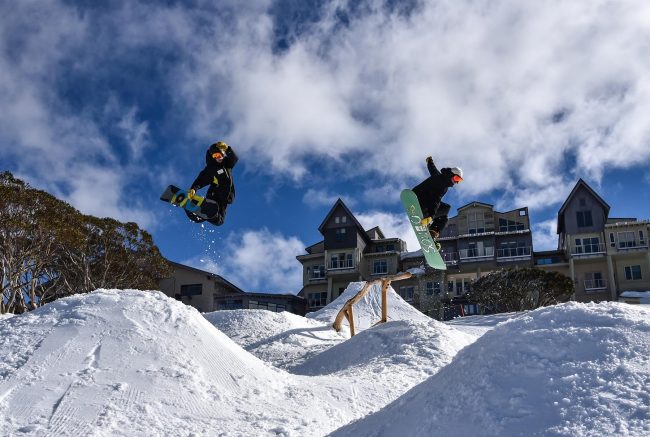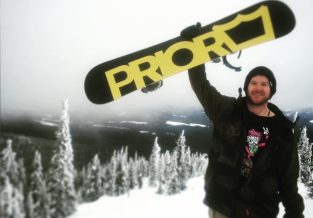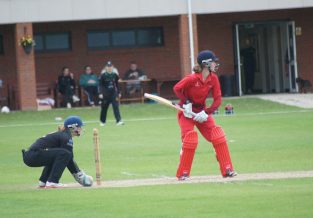Keeping your feet in the snow
Published on
23 Apr 2021

Call us on: (03) 9975 4133
With snow season just around the corner it’s time to strap on your boots and do some exercises to get you ready for your upcoming trip. Last week I shared some of the common injuries you will find on the mountain with the message being “stay on your feet!” This week I’ll be talking about exercises and types of exercise that can help you do this.
It doesn’t matter if you take to skis or a snowboard, you will need lower limb and core strength and stability in order to maximise your fun. We derive much of our balance and stability from our core and leg muscles so it makes sense that the better each muscle group works, the better we will perform. It is also important these groups work synergistically for control during dynamic movements.
Areas to focus on for lower body:
- Compound strength movements eg. squats, deadlifts and calf raises. These exercises build lower limb and core strength in a sagittal plane (forward/backwards movement) and are great for snowboarding as you will be doing a lot of weight shifting between heel and toe sides.
- Endurance eg. isometric holds and high rep/low weight exercises.
- Explosivity if you intend on attempting jumps eg. squat jumps or box squats.
- Lateral stability, especially for skier eg. lunges or bulgarian split squats. Skiers weight shift laterally and have higher demands in this way than snowboarding.
Training your core in isolation doesn’t take long, can be done as a circuit and can be put at the end of your session. There are many ways to train your core, but here are some areas to target:
- Choose 3 – 4 exercises that address at least 3 different planes of movement, i.e flexion, extension, rotation and lateral flexion. I would place less importance on lateral.
- Can be done as a circuit at the end of your session to save time as your core is harder to fatigue .
- Example exercises: Hanging leg raises (flexion), prone hyper-extension (extension), twisting pallof press (rotation) and side planks (lateral).
Although snow sports involve heavy use of our leg and core muscles we can’t neglect the upper body. This is important for pushing yourself up from the snow and controlling movement through your upper body to help weight-shifting. Here are some focus points:
- Pushing strength through chest and triceps particularly so you can get off the floor and also control the impact of a fall. Dumbbell press is great to build your chest and triceps in a more dynamic way as falls will involve asymmetrical landing.
- Tricep dips on parallel bars are a great way to build tricep strength as well as core stability. Adding a forward lean will also recruit your lower pecs, just be sure you don’t compromise form and round your shoulders.
- Rows for the back and shoulder girdle are great to improve stability and control your thoracic movement.
- Single arm pull downs and shoulder raises are great for skiers to train muscles involved in pole control.
Mobility, cardio and balance are all important and variations of strength and endurance exercises can be used to reduce the time required to address all areas of training.
- Cardio at least 2 times per week is a must to improve your endurance and recovery. Pick your poison with this one, cycling and running are great for cardio and lower limb strength. HIIT training is great for efficiency and you can even use your explosive moves like squat jumps and box jumps.
- Thoracic mobility, mainly rotation, is particularly important for snowboarders as they use a lot of upper body rotation to turn. Progressing to mobility exercises on wobble boards is a challenge and translates well to the board or skis.
- Hamstring and lumbar mobility is also important for both to improve ease of movement and control through your pelvis and hips.
- Balance training for snowboarders should focus more on forwards/backwards movement and skiers on lateral. Single leg exercises and wobble boards are great tools for this. Using a bosu or exercise ball is also a great way to improve balance, core stability as well as lower or upper body strength and be time efficient. For example; push ups on a bosu or squats on a wobble board.
There are so many ways to train for the demands of snow sports and even more exercises to choose from. Rather than try to give you a program here and call it a “4 week killer program to have you shredding,” it is best to consult a professional to design a program tailored to your individual needs. At Pure Physio our manual and rehabilitation physiotherapists are experts in addressing structural limitations and exercise prescription.
If you are keen to improve your skills and prevent injury so you can make the most of your snow trip, book in for an assessment, we would love to help you achieve your goals.


